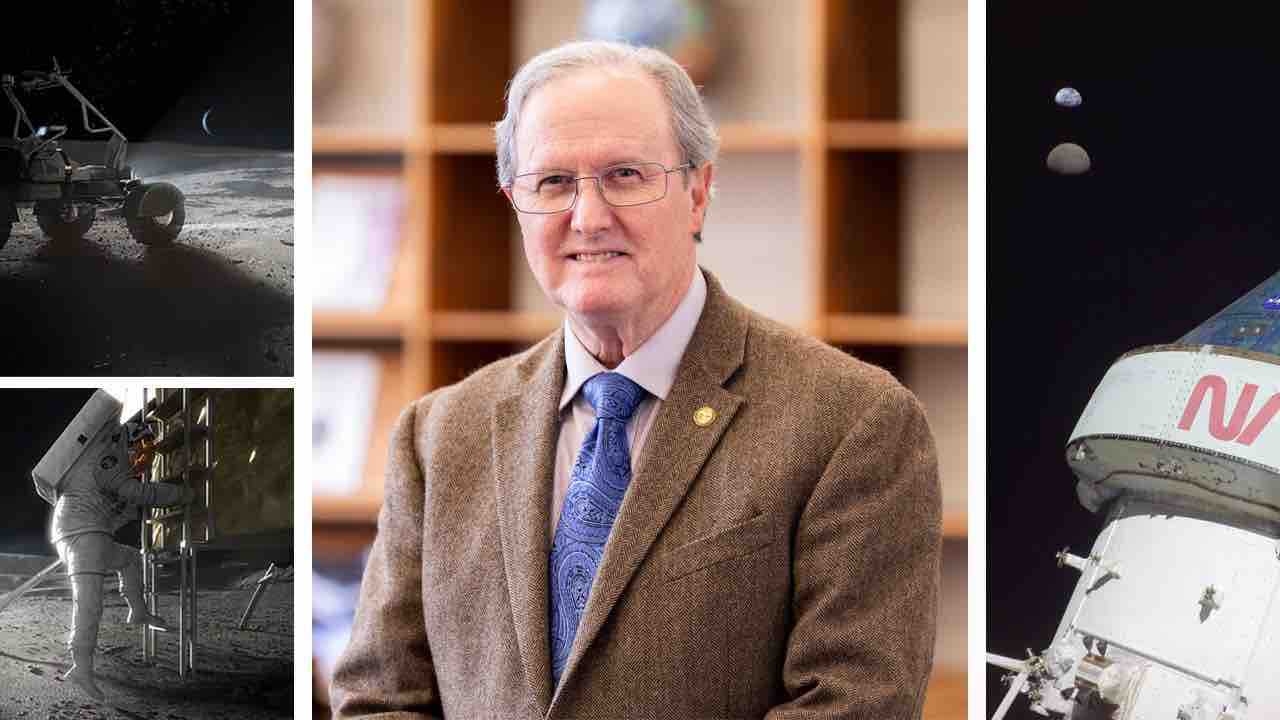We met Bradley L. Jolliff, Scott Rudolph Professor of Earth and Planetary Sciences at Washington University in St. Louis (Missouri, USA). Jolliff is focused on the study of minerals and rocks of the Earth, the Moon, Mars and meteorites. Moreover, he is a member of the Lunar Reconnaissance Orbiter Camera (LROC) science team, thanks to which he investigates the surface of the Moon from lunar orbit.
Recently, NASA has selected the Geology team that will develop the surface science plan for the Artemis III mission. The latter, will return humanity to the surface of the Moon after more than 50 years. To be precise, the next man and the next woman will land near the lunar South Pole between 2025 and 2026. Professor Bradley Jolliff is part of the team of geologists selected by NASA.
You’ve been selected by NASA to be part of the team of geologists who will develop the surface science plan for the Artemis III mission. How will you prepare the Artemis III scientific mission? Is the geologists’ goal to advise in which area of the lunar south pole to land?
The landing site (or multiple sites) will be selected ahead of time. The Artemis geology team will be part of that selection process, but the larger task will be to evaluate the top candidate landing sites with respect to their geology once the final down-select has been made. The geology team will make recommendations for the geological investigations and sample collection, but other factors such as safety, communications, and experiments at the landing site will also be part of the decision process. After the mission, we will assist in the preliminary examination of the samples.
Credit: NASA’s Goddard Space Flight Center
Why did NASA choose the lunar south pole for humanity’s return to the Moon? What makes you think there is water ice in permanently shadowed regions?
The likelihood of H2O-ice at the south pole of the Moon in areas of permanent shadow has been indicated by remote sensing (neutron spectrometers and other sensors) and demonstrated in the case of the LCROSS experiment in 2009, which impacted the Moon in Cabeus crater. As a result of the observations, we know H2O ice is there, but we do not know the actual concentration, form, or distribution of the deposits. Some of the south polar craters are younger than others, and we also do not know the variation of deposits as a function of age. The neutron spectrometer data have insufficient spatial resolution to really nail down where the deposits are located with the kind of knowledge needed for astronauts or robotic explorers. Upcoming missions such as NASA’s VIPER mission should help define the ice deposits.
Credit: NASA
After 50 years, Apollo Next Generation Sample Analysis (ANGSA) will study Apollo samples. How has the technology changed since 1972? What do you think you will discover by studying the Apollo samples with modern technology?
Analytical methods have improved tremendously since the early days of Apollo sample studies. In particular, mass spectrometers and microbeam analytical methods can now probe samples – rocks and soils – with unprecedented spatial resolution and low detection limits. Volatile element contents and isotopes, including hydrogen and deuterium, can be analyzed in minerals and glasses. Imaging methods such as micro-x-ray computed tomography can see the variations of materials inside of samples without destroying them so that scientists can select the exact materials needed to analyze. Many elements have multiple isotopes, and these can now be analyzed with sufficient precision and accuracy to test ideas about how the Moon formed and what are the processes that have affected the volatile elements in particular?
What do you love about your job and what is the discovery that has most excited you during your career?
I am a geologist who works best with samples of rocks and minerals in hand. I love to analyze the materials at the microscopic level and figure out how, where, and when they formed. I am particularly interested in the timing of the heavy impact bombardment of the Moon that took place prior to about 3.8 billion years ago and what caused the bombardment. Of the work my colleagues and I have done that is most exciting to me, I would mention two things. One is to determine the age of rock samples that formed in the great Imbrium basin impact event. Analyses of zircon grains in impact-melt rocks give us a precise age of between 3.91 and 3.92 billion years. Imbrium was among the last of the great impacts on the Moon and marks near the end of the period of heavy bombardment that would have also affected the Earth.
Credit: NASA’s Scientific Visualization Studio
The second thing is the discovery that a small and very well-preserved silicic volcanic complex occurs on the Moon’s northern farside, just beyond the eastern limb of the Moon. It is called the Compton-Belkovich Volcanic Complex. This feature was first known as a hotspot in orbital gamma-ray data (Lunar Prospector, 1998) that could detect the radioactive element thorium. It was first observed at high enough resolution to discern the volcanic features when the Lunar Reconnaissance Orbiter imaged in in 2009-2010.
My colleagues and I on the Lunar Reconnaissance Orbiter Camera team got to analyze those images. It is one of the most geologically interesting locations on the Moon, unlike anything visited by Apollo or other missions. I hope that someday soon, there will be a robotic mission there to explore its various cones, domes, pyroclastic deposits, and what appears to be a caldera, formed when the roof of a shallow magma chamber emptied and collapsed. The Moon remains a very interesting celestial object about which our exploration has much yet to learn!
- Cover image: Bradley L. Jolliff (central photo: eeps.wustl.edu); side photo: NASA

